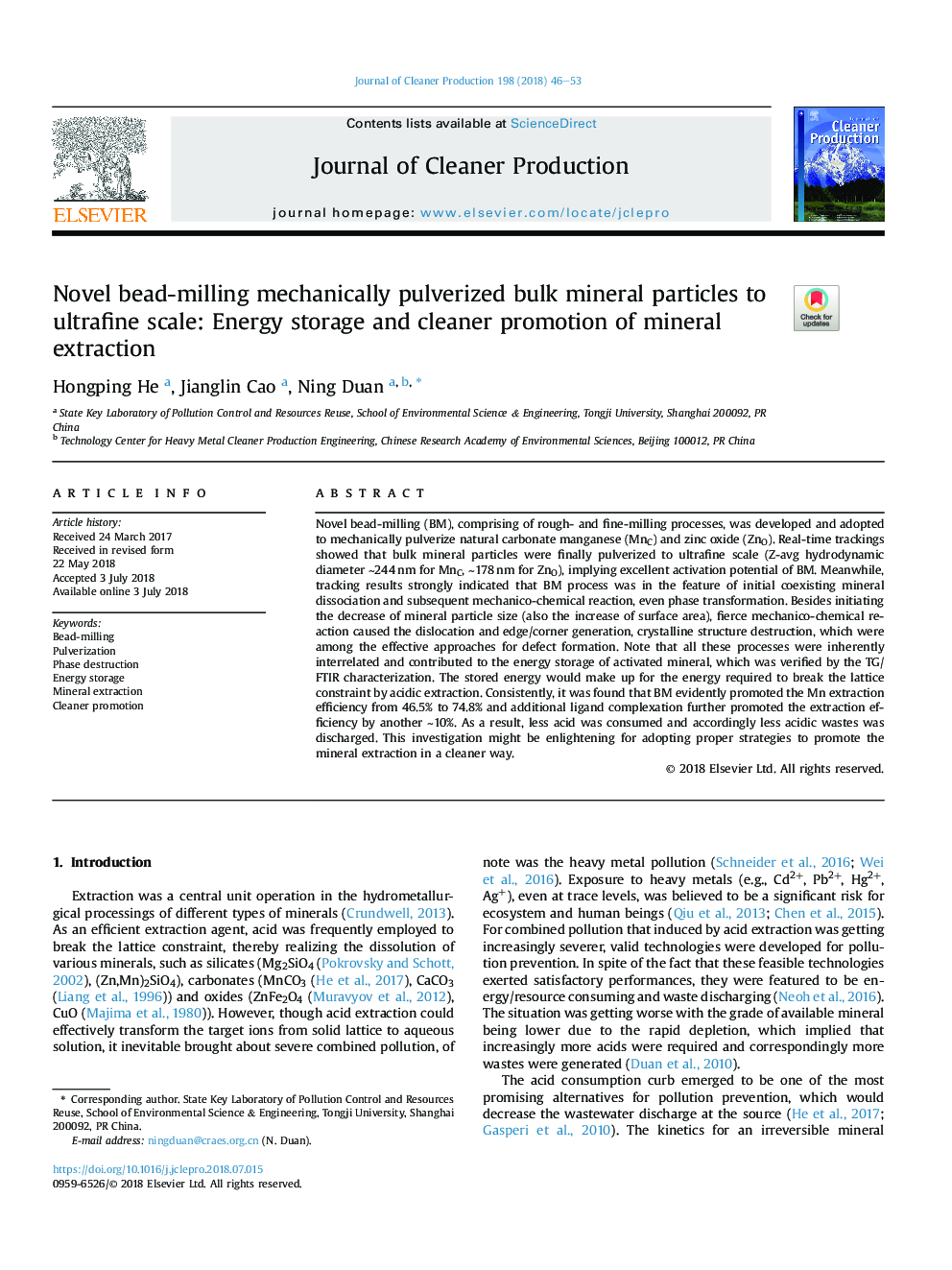| Article ID | Journal | Published Year | Pages | File Type |
|---|---|---|---|---|
| 8093407 | Journal of Cleaner Production | 2018 | 8 Pages |
Abstract
Novel bead-milling (BM), comprising of rough- and fine-milling processes, was developed and adopted to mechanically pulverize natural carbonate manganese (MnC) and zinc oxide (ZnO). Real-time trackings showed that bulk mineral particles were finally pulverized to ultrafine scale (Z-avg hydrodynamic diameter â¼244â¯nm for MnC, â¼178â¯nm for ZnO), implying excellent activation potential of BM. Meanwhile, tracking results strongly indicated that BM process was in the feature of initial coexisting mineral dissociation and subsequent mechanico-chemical reaction, even phase transformation. Besides initiating the decrease of mineral particle size (also the increase of surface area), fierce mechanico-chemical reaction caused the dislocation and edge/corner generation, crystalline structure destruction, which were among the effective approaches for defect formation. Note that all these processes were inherently interrelated and contributed to the energy storage of activated mineral, which was verified by the TG/FTIR characterization. The stored energy would make up for the energy required to break the lattice constraint by acidic extraction. Consistently, it was found that BM evidently promoted the Mn extraction efficiency from 46.5% to 74.8% and additional ligand complexation further promoted the extraction efficiency by another â¼10%. As a result, less acid was consumed and accordingly less acidic wastes was discharged. This investigation might be enlightening for adopting proper strategies to promote the mineral extraction in a cleaner way.
Related Topics
Physical Sciences and Engineering
Energy
Renewable Energy, Sustainability and the Environment
Authors
Hongping He, Jianglin Cao, Ning Duan,
